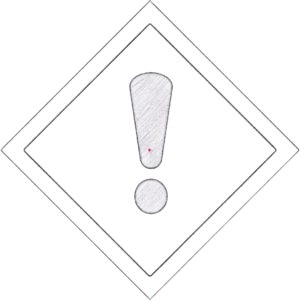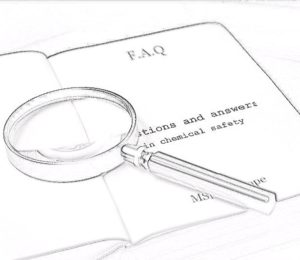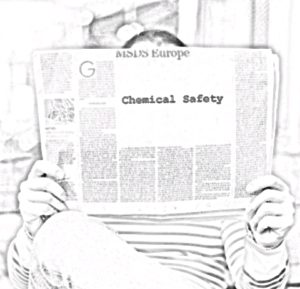MSDS Europe newsletter
MSDS Europe – Newsletter 2022/1
Stay up to date on chemical safety
– No. 2022/1 –
 Updates
Updates
Commission Delegated Regulation (EU) 2020/1182 of 19 May 2020 amended Annex VI to Regulation (EC) No 1272/2008 of the European Parliament and of the Council, changing the harmonised classification of several hazardous substances.
We recommend that you check, whether the ingredients of your products are affected.
The safety data sheets of mixtures containing ingredients covered by this legislation need to be updated according to the new mandatory harmonised classifications.
The Regulation is binding from 1 March 2022.
The referenced legislation can be found and downloaded in the “Regulatory change observer” section of our website.
Regulatory change observer in the main EU languages
EN I DE I FR I ES I IT I PL I HU I CS I RO I SL I SK
 Free online PCN webinar
Free online PCN webinar
Date: 24 March 2022
Beginning: at 10 o’clock (CET)
Duration: ca. 1 hour
Language of the webinar: English
Due to the uncertainty our clients have experienced around PCN registration and the use of the UFI code, we thought we would offer them the opportunity to attend a free online presentation. You can receive actually useful and reliable information from our expert on the subject.
We recommend our webinar to our clients who are absolutely new to the subject and who are already experienced in filing PCN notifications.
Main topics
- Brief description of the relevant legal background
- Explanation of changes in labelling of chemical products
- Information on using UFI (Unique Formula Identifier)
- Reflections on the strategic planning of the notification
- Useful sources of information to acquire appropriate theoretical and practical knowledge
- Informal conversation, answering questions
Please indicate your interest to participate by filling in the form below.
You can participate in the webinar until the starting time by using the Zoom link sent to the email address you provided.
We recommend that you install the Zoom app before we start.
 31 December 2022 – The final deadline!
31 December 2022 – The final deadline!
Update your safety data sheets according to Commission Regulation (EU) 2020/878
On 1 January 2021, Commission Regulation (EU) 2020/878 entered into force, which will replace Annex II to Regulation (EC) No 1907/2006 laying down the content and format of safety data sheets and EU Regulation 2015/830 after 1 January 2023.
Before 1 January 2023, the requirements of both Regulation (EU) 2015/830 and Regulation (EU) 2020/878 may be applied. This means that until 31 December 2022, Regulation (EU) 2015/830 may still be applied, when compiling or updating safety data sheets, or when preparing safety data sheets in different languages.
Due to the approaching deadline, however, it is worth preparing for the changes now!
Our suggestions:
- Monitor changes to the format and content of the data sheets received from the supplier, and if you have already received a data sheet prepared in accordance with (EU) 2020/878, update your existing safety data sheet file without delay.
- To ensure that the above deadline is met, suppliers should also be reminded to switch to issuing safety data sheets that comply with the new regulation as soon as possible.
- As long as you do not have the information required to be included in the data sheet by the new Regulation, do not apply Regulation (EU) 2020/878, as in this case the data sheet will only be “formally” compliant, and not in terms of content!
The sample data sheet containing the new form and content requirements under Commission Regulation (EU) 2020/878 is available in the following languages:
EN I DE I FR I ES I IT I PL I HU I CS I RO I SL I SK
 FAQ
FAQ
Frequently asked questions and answers on topics related to chemical safety
In our experience, our clients’ enquiries on certain topics repeatedly raise the same (or very similar) questions.
We thought that the answers to these questions were likely to be useful and helpful to others. With all this in mind, we have created our Chemical Safety FAQ page, where we will continue to publish questions and answers that may be of interest.
We will be constantly expanding the content of the site, so it will be worth returning to it later.
Frequently asked questions are available in the following languages on our website:
EN I DE I FR I HU
 Regulatory change observer
Regulatory change observer
There have been no major changes in legislation affecting everyone recently that we feel are necessary to report in this newsletter.
We recommend that you check the legislation available in our “Regulatory change observer” section and check your own chemical portfolio for possible concern. If necessary, take appropriate action.
New
- DIRECTIVE (EU) 2022/431 OF THE EUROPEAN PARLIAMENT AND OF THE COUNCIL of 9 March 2022 amending Directive 2004/37/EC on the protection of workers from the risks related to exposure to carcinogens or mutagens at work
Regulatory change observer in the main EU languages
EN I DE I FR I ES I IT I PL I HU I CS I RO I SL I SK
 Press observer
Press observer
Articles published on other websites in the field of chemical safety that may contain useful information for you as well.
Four new hazardous chemicals added to the Candidate List in January 2022
The Candidate List of substances of very high concern now contains 223 entries for chemicals that can harm people or the environment. One of the four substances added is used in cosmetics and has been added to the Candidate List as it has hormone-disrupting properties in humans. Two are used, for example, in rubbers, lubricants and sealants, and have been included because they negatively affect fertility. The fourth is used in lubricants and greases and has been added as it is persistent, bioaccumulative and toxic, and therefore harmful for the environment.
Proposal to ban ‘forever chemicals’ in firefighting foams throughout the EU
The European Chemicals Agency brings forward a proposal for an EU-wide restriction on all per- and polyfluoroalkyl substances (PFASs) in firefighting foams. The restriction would prevent further groundwater and soil contamination and health risks for people and the environment.
Researchers identify more worker deaths linked to paint-stripping chemical
Worker deaths caused by exposure to methylene chloride are on the rise. Methylene chloride is a solvent widely used in paint strippers, cleaners, adhesives and sealants. Methylene chloride may cause cancer, harm to the central nervous system and toxicity to the liver, among other adverse health effects.
EPA releases final risk evaluation for perchloroethylene, a chemical frequently used in consumer products
The chemical substance perchloroethylene poses unreasonable risk to workers under certain conditions. A 2017 study published in the journal BMJ Open found occupational exposure to PCE may increase women’s risk of head and neck cancer. EPA is moving immediately to risk management for this chemical and will work as quickly as possible to propose and finalize actions to protect against the unreasonable risks.
INCOMPATIBILITY OF COMMON LABORATORY CHEMICALS
When certain hazardous chemicals are stored or mixed together, violent reactions may occur because the chemicals are unsuitable for mixing, or are incompatible. This list contains the major chategories of chemicals and provides information about the incompaticle materials to avoid when dealing with the chemicals.
IUCLID update brings improvements to poison centre notification format
Since October 2021, new functions are available between the PCN notification tools in IUCLID 6 Cloud: possibility to indicate multicomponent products, group submission, new update reasons, new categories have been added to EUPCs. Furthermore from December 2021, it will be possible to disable submissions in some special cases.
Register for events announced in the newsletter, ask our experts

